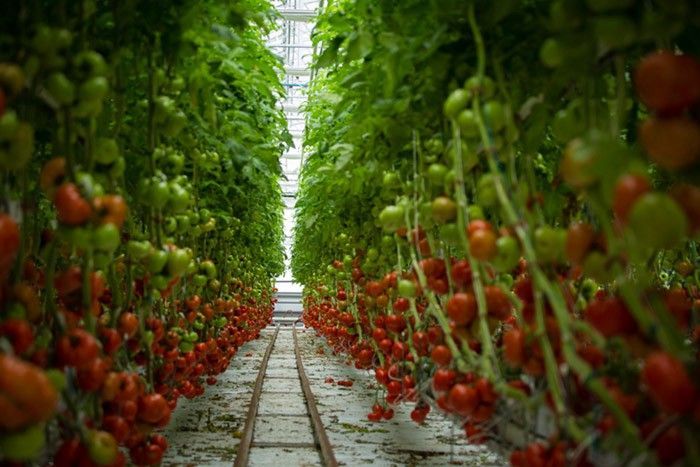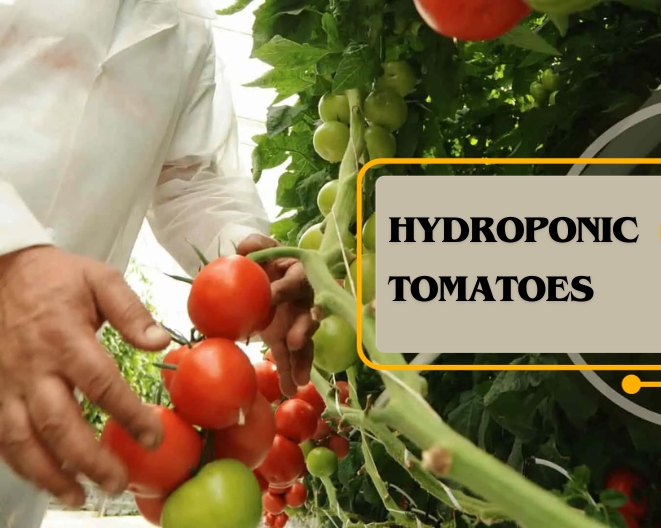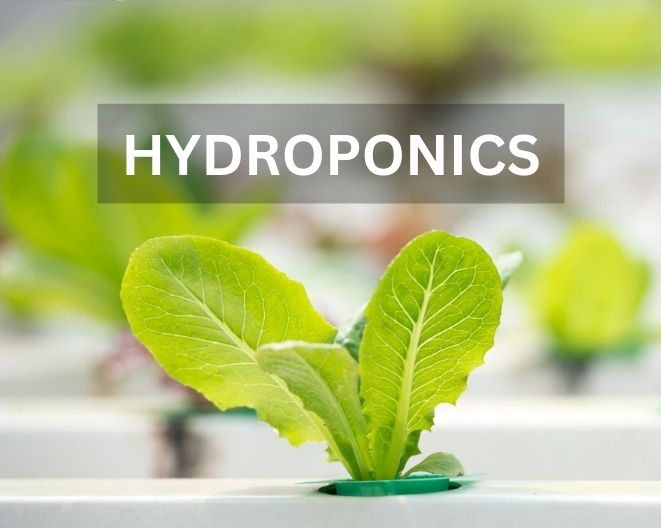The realm of hydroponics, a method of cultivating plants without soil, has captured the imagination of urban farmers and sustainability enthusiasts alike. As cities grapple with space constraints and environmental challenges, hydroponic tomatoes emerge as a beacon of innovation and possibility. This article explores the transformative potential of hydroponic tomatoes in urban settings, spotlighting their role in rooftop gardens and vacant lots, and inviting communities to embrace this sustainable farming revolution.
What Are Hydroponic Tomatoes?
Hydroponic tomatoes are tomatoes cultivated using nutrient-rich water solutions instead of soil. This soil-less cultivation method offers precise control over nutrient delivery, promoting healthier plant growth and higher yields.
Why Hydroponic Tomatoes?
Hydroponic tomatoes have garnered significant attention for their transformative impact on modern agriculture, particularly in urban environments constrained by space and resources. Unlike traditional soil-based cultivation, hydroponic systems deliver essential nutrients directly to the plant roots through a nutrient-rich water solution, ensuring optimal growth and productivity. This soil-less approach not only conserves water—often up to 90% less than conventional methods—but also maximizes space utilization through vertical farming technologies.
Beyond resource efficiency, hydroponically grown tomatoes frequently exhibit superior nutritional profiles and taste, making them a preferred choice for health-conscious consumers. Moreover, by reducing transportation distances and ensuring year-round production, hydroponic farming enhances local food security and economic resilience. As communities increasingly prioritize sustainability and self-sufficiency, the allure of hydroponic tomatoes continues to grow, offering a compelling solution for fresh, nutritious, and locally sourced produce in urban settings.
Benefits of Hydroponic Farming
Hydroponic farming presents a paradigm shift in agricultural practices, offering a multitude of benefits that resonate with modern sustainability goals and efficient resource management. One of the most notable advantages is water efficiency, with hydroponic systems consuming significantly less water compared to traditional soil-based farming methods. This conservation is crucial in addressing global water scarcity challenges. Furthermore, hydroponics allows for space optimization through vertical farming, enabling cultivation in urban environments and maximizing production per square foot.

Another compelling benefit lies in year-round production, facilitated by controlled indoor environments that negate the effects of seasonal changes. This consistency ensures a steady food supply and reduces dependency on external factors like weather patterns. In terms of quality, hydroponically grown crops often exhibit enhanced nutritional profiles, including higher vitamin and mineral content, owing to precise nutrient management.
Economically, hydroponic farming offers reduced transportation costs and promotes local produce availability, thereby supporting regional economies and reducing carbon footprints associated with long-distance food transportation. Additionally, by eliminating the need for soil, hydroponic systems mitigate soil-borne diseases, pests, and contaminants, leading to healthier crops and sustainable agricultural practices. Overall, the amalgamation of water conservation, space efficiency, year-round productivity, nutritional benefits, and economic advantages positions hydroponic farming as a cornerstone of future-forward, sustainable food production systems.
Benefits of Using Rooftops
- Sun Exposure Optimization: Rooftop locations offer ample sunlight, essential for the photosynthesis process.
- Utilizing Unused Spaces: Converting rooftops into hydroponic farms transforms idle spaces into productive agricultural hubs.
- Community Involvement: Rooftop gardens provide opportunities for community engagement, education, and hands-on farming experiences.
Transforming Rooftops: The Future of Urban Farming
Case Studies
The transformative potential of hydroponic tomatoes in urban settings is vividly illustrated through several pioneering case studies from around the globe. These real-world examples underscore the adaptability, sustainability, and economic viability of hydroponic farming, especially in densely populated urban environments where space is at a premium.
New York City, USA:
The Gotham Greens Story: This Brooklyn-based company has revolutionized urban agriculture by establishing rooftop hydroponic farms across New York City. With a focus on sustainability, Gotham Greens utilizes advanced hydroponic systems to produce a variety of fresh, local, and pesticide-free tomatoes year-round. Their innovative approach not only addresses food security issues but also significantly reduces transportation emissions associated with importing produce into urban centers.
Tokyo, Japan:
Pasona O2 Urban Farm: Located in the heart of Tokyo’s bustling business district, the Pasona O2 Urban Farm stands as a testament to vertical farming innovation. This multi-story hydroponic farm produces a diverse range of crops, including tomatoes, using state-of-the-art technology to optimize space and resource efficiency. The farm serves as an educational hub, hosting workshops and tours that educate the community on sustainable agriculture practices and the benefits of locally-grown produce.
London, United Kingdom:
Growing Underground: Beneath the streets of London lies a subterranean hydroponic farm known as Growing Underground. Utilizing abandoned underground tunnels, this innovative venture produces hydroponic tomatoes and other leafy greens, leveraging LED lighting and controlled environments to maximize yield and quality. Growing Underground exemplifies the adaptability of hydroponic farming, transforming disused spaces into productive agricultural hubs while reducing food miles and promoting local food resilience.
Sydney, Australia:
SkyFarming Company: Recognizing the potential of rooftops and vacant lots, the SkyFarming Company in Sydney has pioneered several hydroponic tomato farms across the city. By collaborating with local communities, businesses, and educational institutions, SkyFarming fosters a culture of sustainability, providing fresh, nutrient-rich tomatoes to urban consumers while revitalizing unused spaces and promoting environmental stewardship.
These case studies highlight the diverse applications and benefits of hydroponic tomatoes in urban settings, demonstrating how to grow hydroponic tomatoes and how innovative farming practices can contribute to food security, sustainability, and community engagement in cities around the world.
Empty Lots: Unleashing Potential
- Regenerating Urban Areas: Converting vacant lots into hydroponic farms revitalizes neglected urban spaces, fostering community pride and cohesion.
- Providing Fresh Produce: Hydroponic farms in food deserts ensure equitable access to nutritious tomatoes and promote healthy eating habits.
- Creating Community Hubs: Empty lots transformed into hydroponic farms serve as gathering places, educational centers, and employment opportunities for local residents.
Overcoming Challenges in Urban Hydroponics
- Space Constraints: Embracing vertical farming solutions maximizes production capacity in limited urban spaces.
- Sunlight or Artificial Lighting: Incorporating artificial lighting systems ensures consistent light exposure, crucial for hydroponic tomato growth.
- Environmental Concerns: Implementing sustainable practices, such as water recycling and renewable energy sources, minimizes environmental impact.
- Community Engagement: Securing partnerships with local organizations, schools, and businesses fosters community involvement and support for urban farming initiatives.

Setting Up Your Hydroponic Tomato Farm
Embarking on a hydroponic journey to cultivate tomatoes in an urban setting requires meticulous planning, investment, and commitment. Setting up your hydroponic tomato farm entails several crucial steps, from selecting the appropriate system and components to ensuring sustainable practices and community engagement. Can you grow tomatoes hydroponically? Yes! here’s a comprehensive guide to help you navigate this exciting endeavor:
1. Choosing the Right Hydroponic System for Urban Spaces:
- Determine Your Space: Assess the available space, whether it’s a rooftop, vacant lot, or indoor area, to determine the scale and type of hydroponic system best suited for your needs.
- System Selection: Consider various hydroponic systems such as Nutrient Film Technique (NFT), Deep Water Culture (DWC), or Vertical Hydroponics, based on space constraints, resource availability, and desired production capacity.
2. Essential Components for Hydroponic Tomato Cultivation:
- Nutrient Solutions: Select or formulate a balanced nutrient solution specifically tailored for tomatoes, ensuring essential macronutrients (Nitrogen, Phosphorus, Potassium) and micronutrients are adequately provided.
- Growing Medium: Choose a suitable growing medium such as perlite, coconut coir, or rock wool cubes that facilitate root growth, nutrient absorption, and optimal aeration.
- Plant Care: Implement a comprehensive plant care regimen encompassing regular monitoring of pH levels, nutrient concentrations, temperature, and humidity to maintain optimal growing conditions.
3. Sustainable and Productive Farm Management:
- Water Management: Implement water conservation practices such as recirculating systems and rainwater harvesting to minimize water usage and promote sustainability.
- Energy Efficiency: Incorporate energy-efficient technologies, including LED lighting, solar panels, and automated climate control systems, to minimize energy consumption and reduce environmental impact.
- Integrated Pest Management (IPM): Adopt IPM strategies such as beneficial insect release, companion planting, and biological controls to manage pests and diseases effectively without relying on harmful chemicals.
4. Community Involvement and Education:
- Workshops and Training Programs: Organize workshops, training sessions, and educational programs to engage the community, share knowledge, and foster a culture of sustainability and local food production.
- Local Partnerships: Establish partnerships with local businesses, schools, restaurants, and farmers’ markets to promote your hydroponic tomatoes, create distribution channels, and build a supportive network within the community.
5. Continuous Learning and Adaptation:
- Monitor and Evaluate: Regularly monitor and evaluate your hydroponic tomato farm’s performance, yield, quality, and sustainability metrics to identify areas for improvement and optimization.
- Research and Innovation: Stay abreast of emerging technologies, research findings, and best practices in hydroponic farming to innovate, adapt, and enhance your cultivation methods continually.
By meticulously planning, investing in quality components, implementing sustainable practices, fostering community engagement, and maintaining a commitment to continuous learning and adaptation, you can successfully establish and operate a thriving hydroponic tomato farm in urban spaces. Embrace the opportunity to contribute to local food security, promote sustainability, and cultivate a vibrant, resilient community centered around fresh, nutritious, and locally grown tomatoes.
Success Stories: Urban Hydroponic Tomato Farms
Inspiring Case Studies:
- Berlin, Germany: A community-driven hydroponic farm in Berlin transforms an abandoned warehouse into a thriving agricultural hub, providing fresh tomatoes to local residents and restaurants.
- Sydney, Australia: Rooftop hydroponic farms in Sydney leverage advanced technology and community collaboration to address food security issues and promote sustainable urban development.
Lessons Learned and Best Practices:
- Community Collaboration: Engaging stakeholders, including local government, businesses, and residents, fosters a supportive ecosystem for urban hydroponic farming.
- Innovation and Adaptability: Embracing technological advancements and adapting to local environmental conditions ensure the long-term success and sustainability of hydroponic tomato farms.
Conclusion
Hydroponic tomatoes in urban spaces represent more than just a farming method; they symbolize a sustainable, community-centric approach to food production. As cities continue to grow and evolve, embracing innovative solutions like rooftop gardens and vacant lot conversions can foster resilience, promote food security, and create vibrant, healthy communities.
Dive into the urban farming revolution and get the answer to “How to grow tomatoes hydroponically?” Whether you’re a community organizer, aspiring farmer, or sustainability advocate, there are countless opportunities to support and engage in hydroponic tomato farming initiatives. Together, we can cultivate a greener, healthier, and more sustainable future for urban communities around the world.
FAQs
A: Hydroponic tomatoes can taste as good as or even better than soil-grown tomatoes. The controlled environment of hydroponic systems allows for optimal nutrient delivery, contributing to improved flavor and quality.
A: The height of hydroponic tomato plants varies based on the specific variety, hydroponic system, and environmental conditions. On average, they can reach heights of 6 to 10 feet or more in vertical systems.
A: The time it takes to grow hydroponic tomatoes depends on factors such as the tomato variety, hydroponic system, and environmental conditions. On average, hydroponic tomatoes can be ready for harvest in 50 to 85 days from planting.
A: The best container for hydroponic tomato cultivation depends on the chosen system. Common containers include nutrient film technique (NFT) channels, deep water culture (DWC) systems, or grow bags filled with a suitable growing medium like perlite or coconut coir. Choose a container that suits your space and hydroponic method.
A: Yes, tomatoes thrive in hydroponic systems, often exhibiting faster growth, higher yields, and enhanced nutritional content compared to traditional soil-based cultivation.





